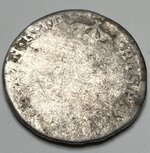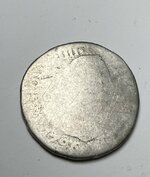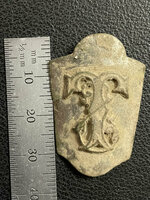Went out metal detecting for the 2nd time in 2 years at a new permission. Unprepared for this! rang up ~28 on the Nox.... sounded like a merc to me, which would make sense because I found a war nickel and a bunch of wheaties on the property.
Instead, I found this little piece of history after digging 2 clad pennies within 3 feet... I believe it is a 1/2 real, 1796. looks like it was carried around for a century or 2 but I'm just happy I got a date and enough to know what it is!
This makes the hours of can slaw, square nails and bottle caps worth it... I think I'll go swinging a bit more this summer!
Bucket list item: Spanish silver - check
oldest coin: 1796 - check




Instead, I found this little piece of history after digging 2 clad pennies within 3 feet... I believe it is a 1/2 real, 1796. looks like it was carried around for a century or 2 but I'm just happy I got a date and enough to know what it is!
This makes the hours of can slaw, square nails and bottle caps worth it... I think I'll go swinging a bit more this summer!
Bucket list item: Spanish silver - check
oldest coin: 1796 - check
Attachments
Last edited:






